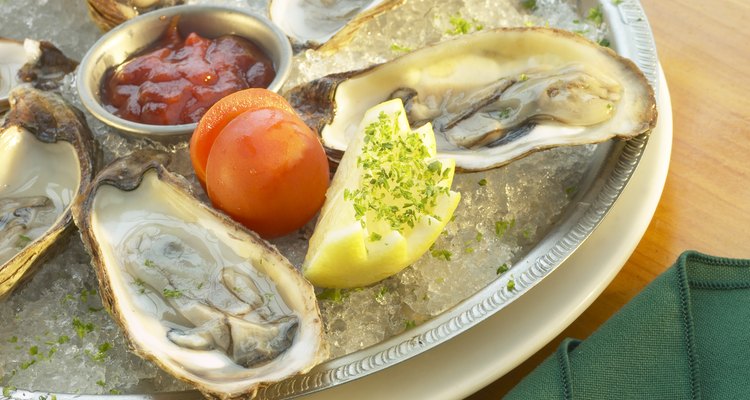
If you are one of the many Americans who don't get enough iron, eating certain types of seafood will help you reach the recommended 18 milligrams per day for women aged 50 and under and 8 milligrams per day for women over 50. Since seafood contains heme iron, you'll absorb more of it than the non-heme iron found in plant foods. You'll also get a nutrient boost from the essential omega-3 fatty acids, vitamins and other minerals seafood provides.
Clams
Each 3-ounce serving of cooked clams contains more than a day's worth of iron, with 23.8 milligrams. Clams are also a good source of phosphorus, potassium, zinc, vitamin C, riboflavin, niacin and vitamin B-12. They provide 241 milligrams of essential omega-3 fats per serving out of the recommended 500 milligrams per day, and are among the types of seafood lowest in mercury, so even pregnant women can eat up to 12 ounces per week.
Oysters
Oysters are another of the more iron-rich types of seafood. Each 3-ounce serving provides 7.8 milligrams, or 44 percent of the recommended daily intake for women aged 50 and under and 98 percent of the recommended intake for women over 50. They are also a good source of calcium, phosphorus, zinc and vitamin B-12, and provide 374 milligrams of omega-3 fats. As with clams, even pregnant women can safely consume up to 12 ounces per week of oysters. Just make sure to cook them first, since raw oysters can be contaminated with a bacteria that can cause a potentially deadly type of food poisoning.
Sardines
Not only are sardines an inexpensive, low-mercury and environmentally friendly seafood option, they are also a good source of iron, providing 2.5 milligrams per 3-ounce serving. These little fish also provide significant amounts of phosphorus, niacin, vitamin B-12 and vitamin D. Eat just one serving of sardines and you'll get more than a day's worth of omega-3 fats, with 835 milligrams. If you are worried about the fishy taste of sardines, you can chop them finely and hide them in tomato-based dishes like spaghetti sauce.
Canned Shrimp
While not all types of shrimp are good sources of iron, a 3-ounce serving of canned shrimp will provide you with 1.8 milligrams. These shrimp are also a good source of calcium, phosphorus and zinc and contain about 267 milligrams of omega-3 fats. Add these shrimp to salads or chowders or chop them up and mix them with low-fat Greek yogurt, onion, celery, lemon juice and mustard to make a seafood salad to use in sandwiches.
Related Articles
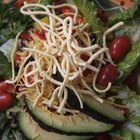
Are Bean Sprouts Good for You?
Seafood Gumbo Calories

Jumbo Shrimp Nutritional Facts

How to Buy Clams

How to Cook Moose Steaks

How to Cook Crawfish
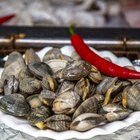
How to Cook Middle Neck Clams
Fried Clams Nutrition
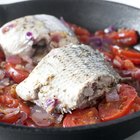
How to Cook Hog Fish

A List of Foods That Contain Choline

How to Cook Fresh Oysters to Make Stew
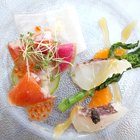
Nutrition of Red Snapper Vs. Tilapia
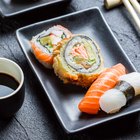
Spicy Shrimp Roll Calories

What Can a Carb-Restricted Person Eat ...
The Calories in Seafood Paella

Can Eating Salads & Fish Make You Lose ...

Food Ideas for a Nautical Party
Creamy Shrimp and Grits Recipe

Food Sources of Phosphatidylcholine
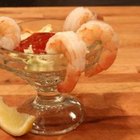
How to Make Shrimp Cocktail
References
- USDA National Nutrient Database for Standard Reference, Release 25: Iron, Fe (mg) Content of Selected Foods per Common Measure, Sorted by Nutrient Content
- U.S. Food and Drug Administration: The Danger of Eating Contaminated Raw Oysters
- American Pregnancy Association: Mercury Levels in Fish
- Office of Dietary Supplements: Iron
- USDA Nutrient Data Laboratory: Mollusks, Oyster, Eastern, Wild, Cooked, Moist Heat
- USDA Nutrient Data Laboratory: Crustaceans, Shrimp, Mixed Species, Canned
- USDA Nutrient Data Laboratory: Mollusks, Clam, Mixed Species, Cooked, Moist Heat
- USDA Nutrient Data Laboratory: Fish, Sardine, Atlantic, Canned in Oil, Drained Solids With Bone
Writer Bio
Based in Massachusetts, Jessica Bruso has been writing since 2008. She holds a master of science degree in food policy and applied nutrition and a bachelor of arts degree in international relations, both from Tufts University.
Photo Credits
Hemera Technologies/AbleStock.com/Getty Images